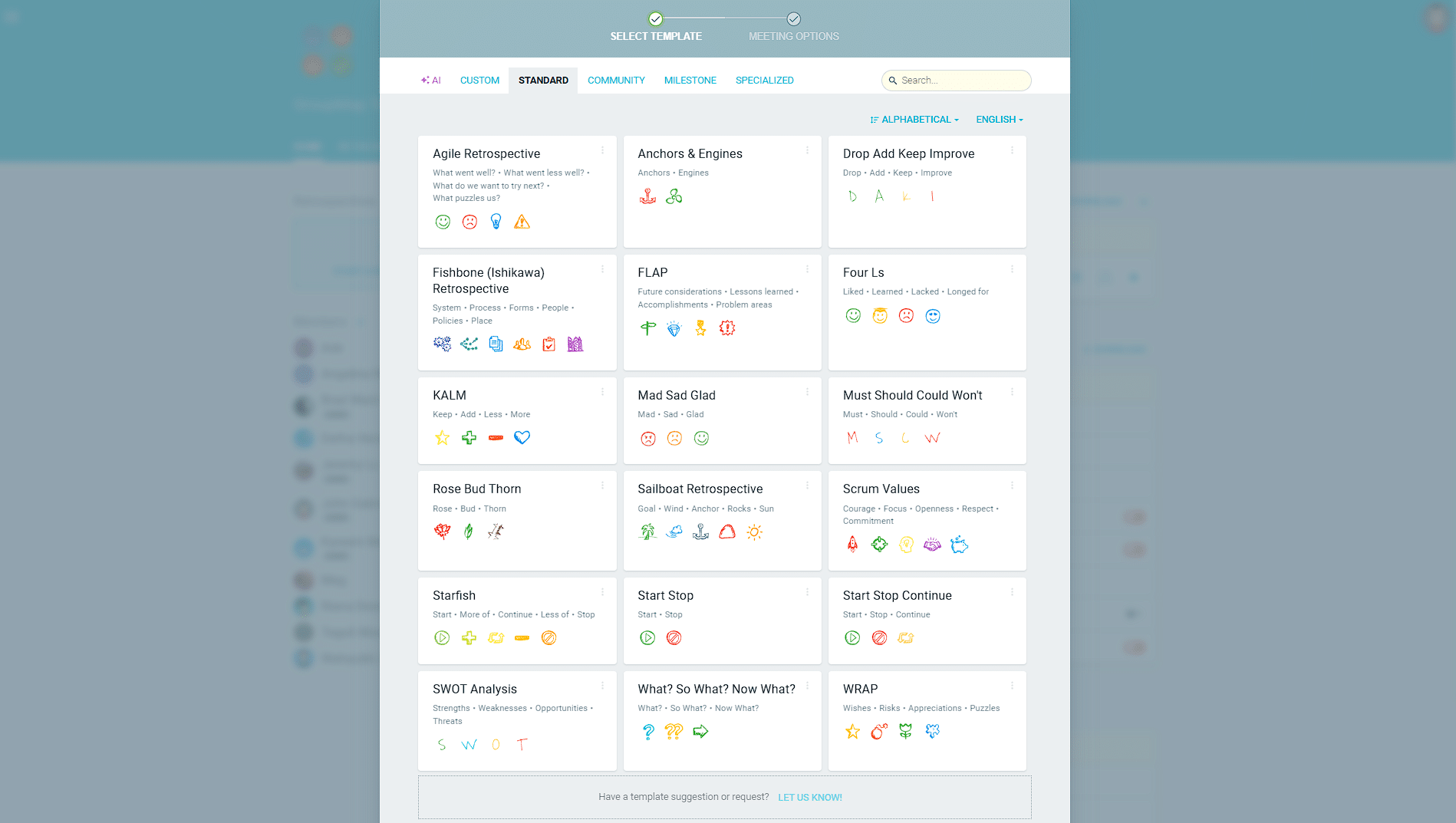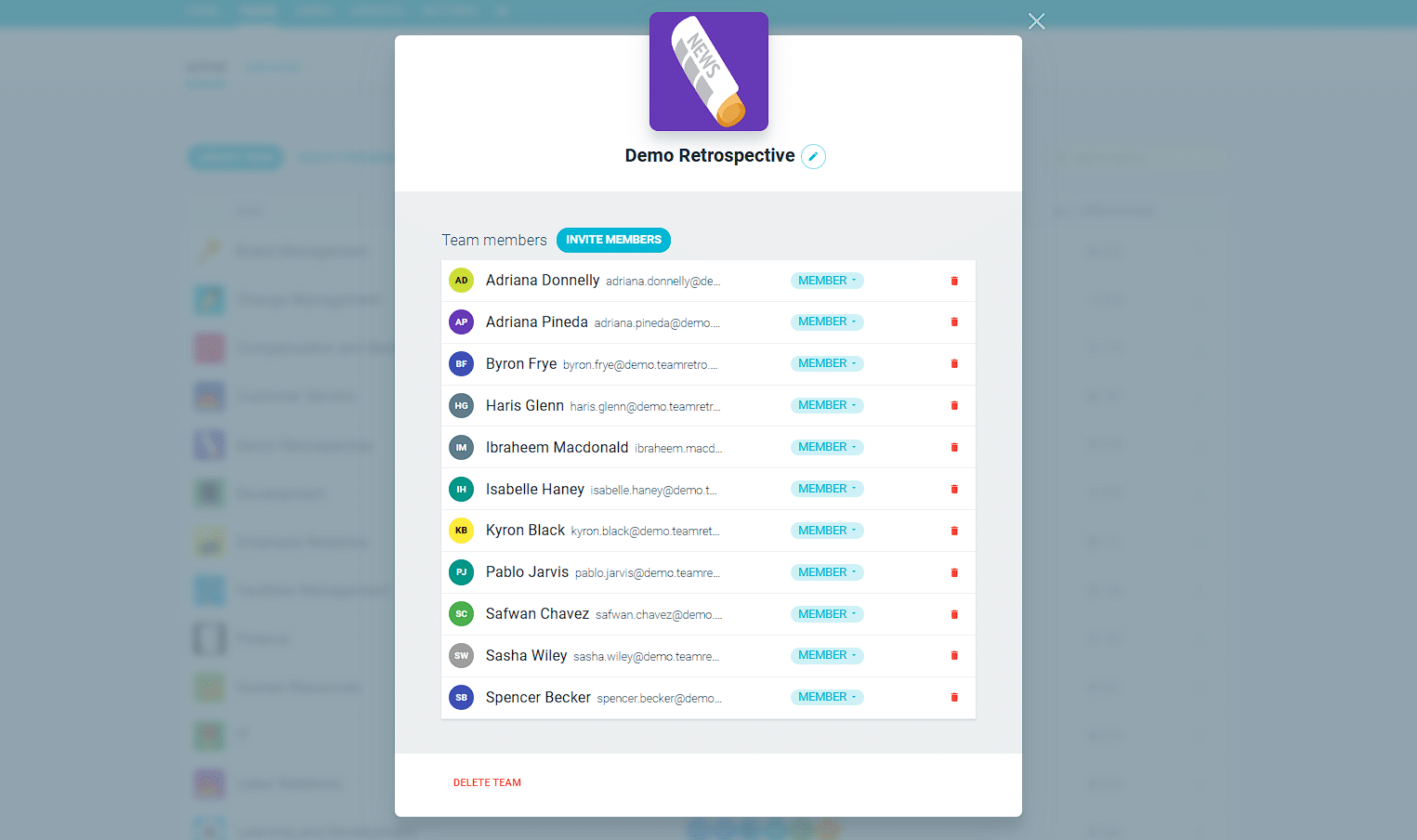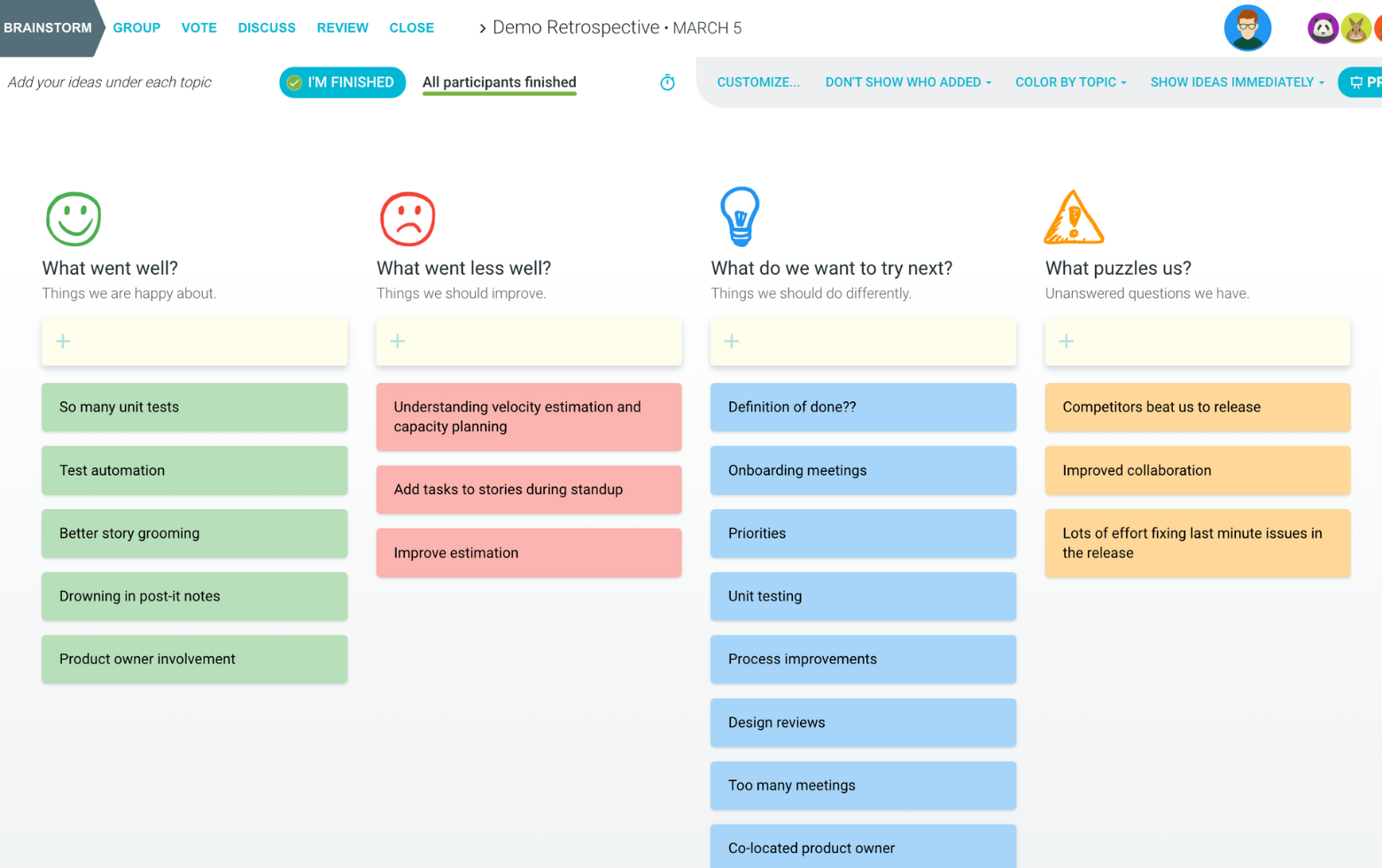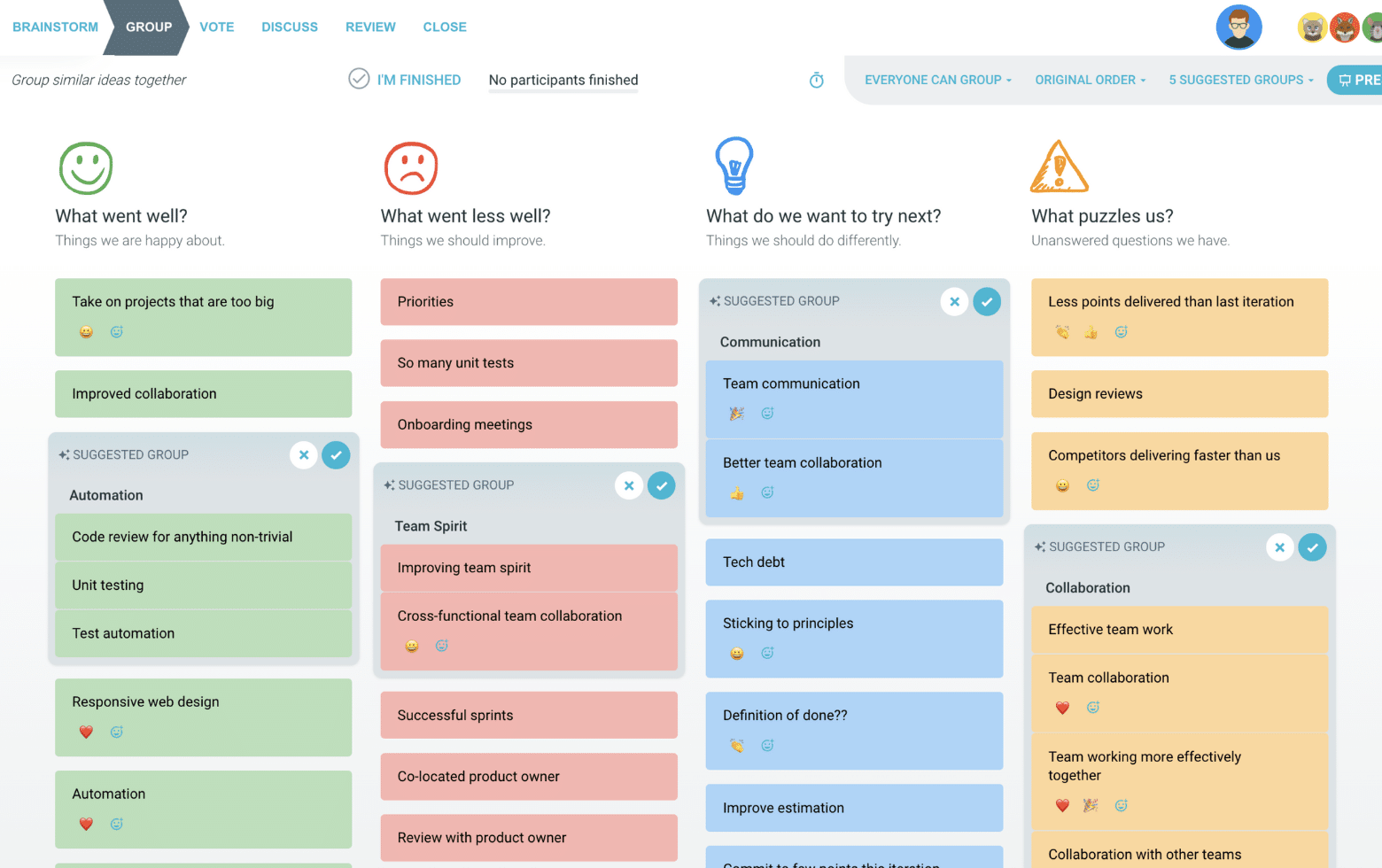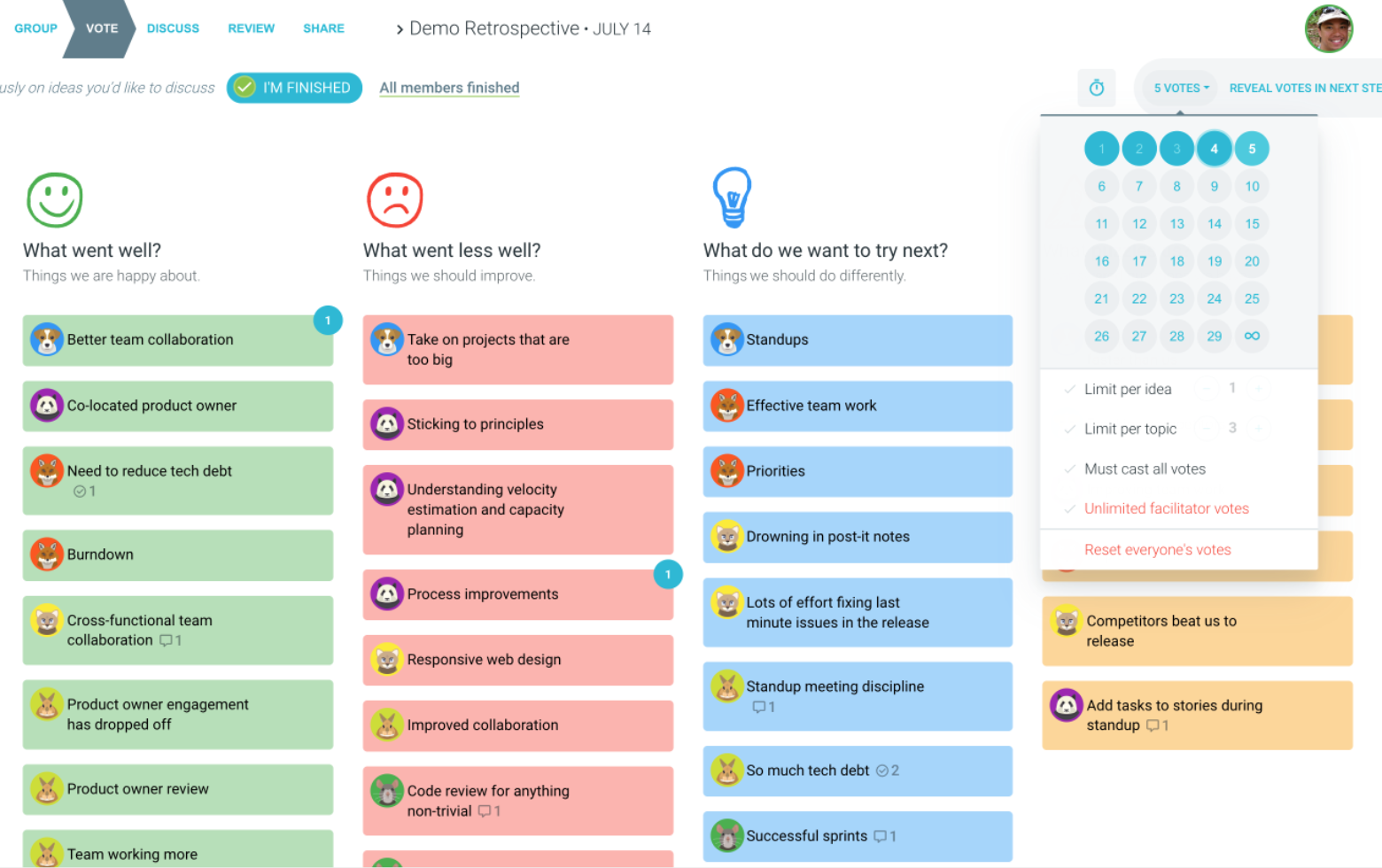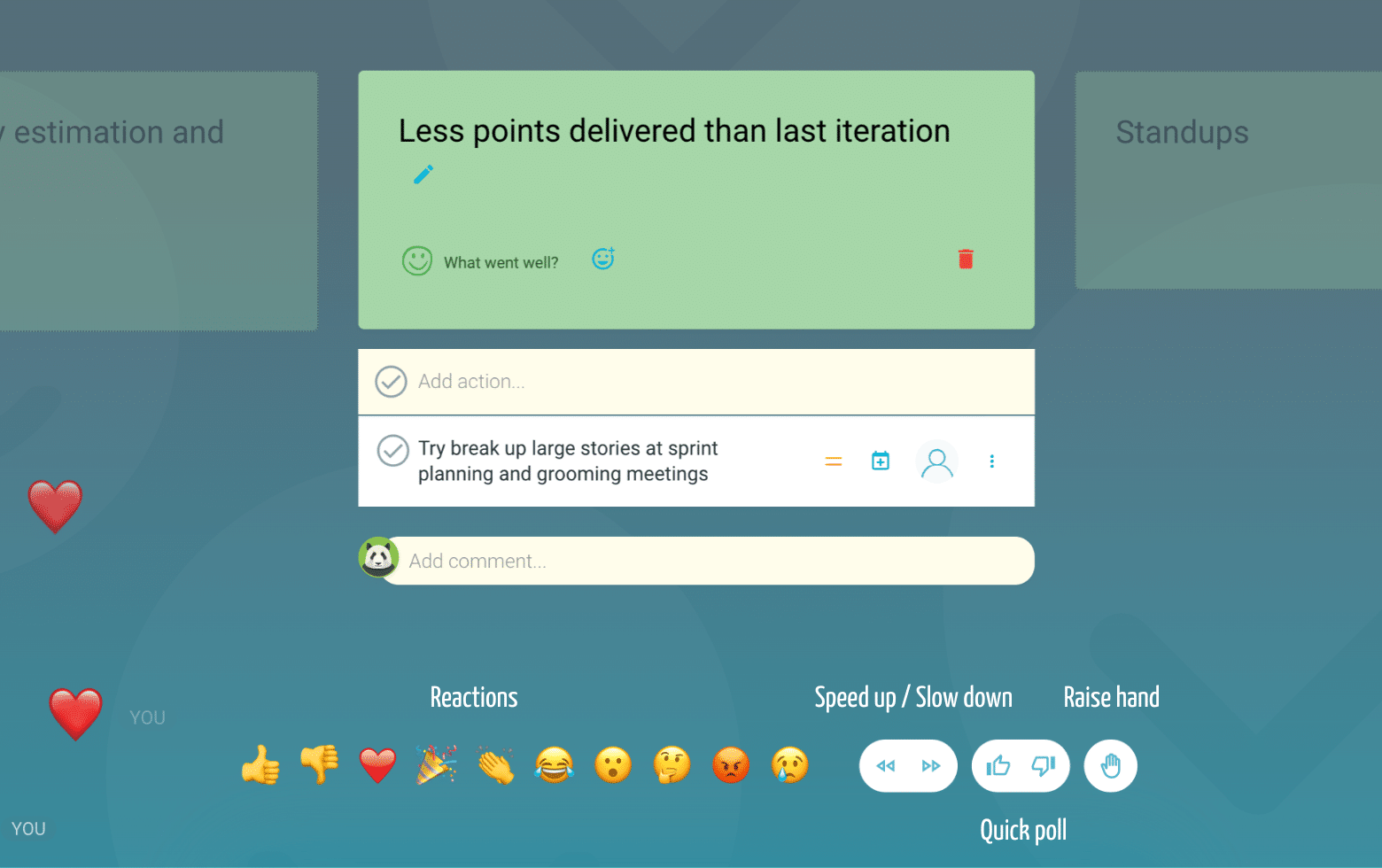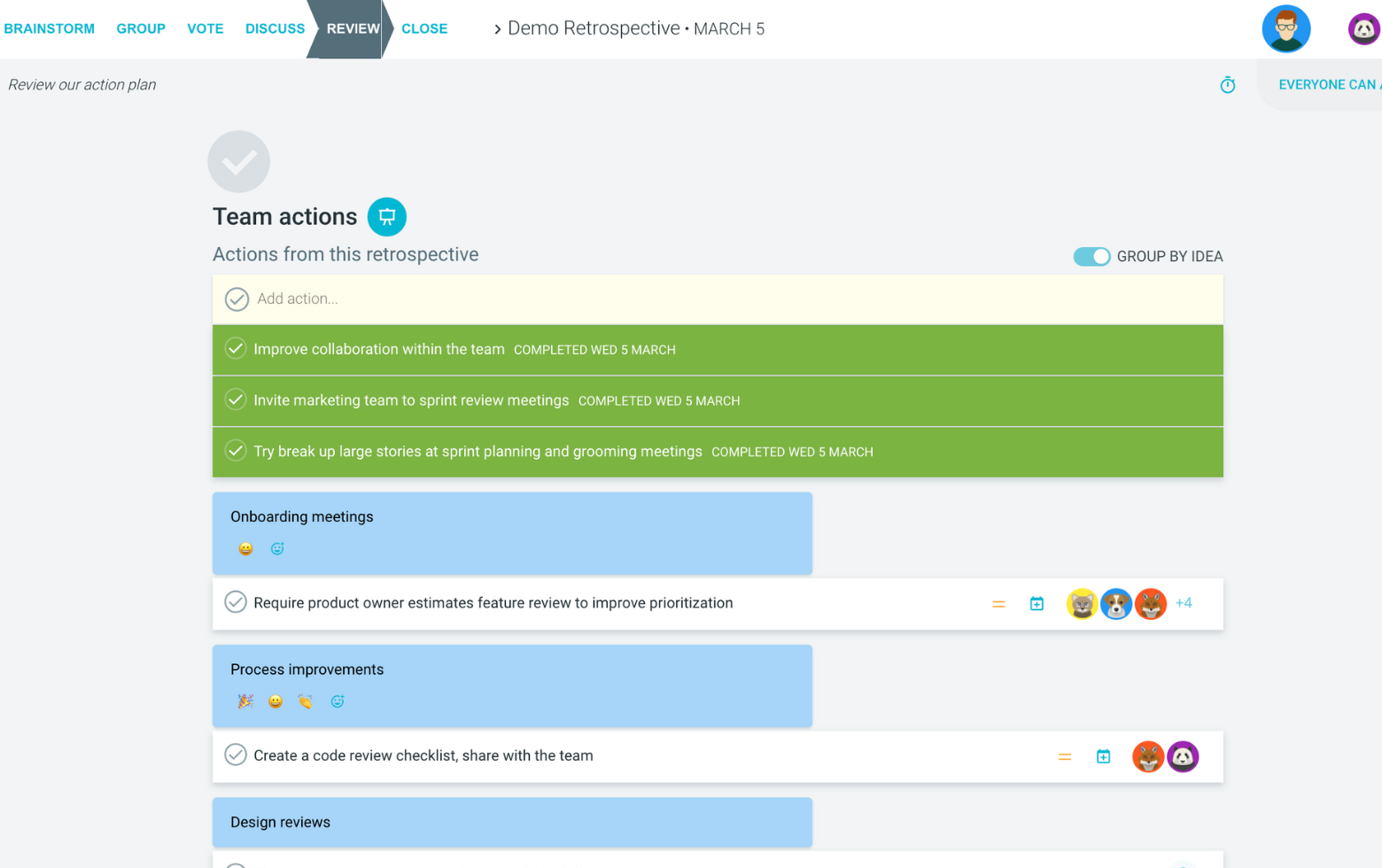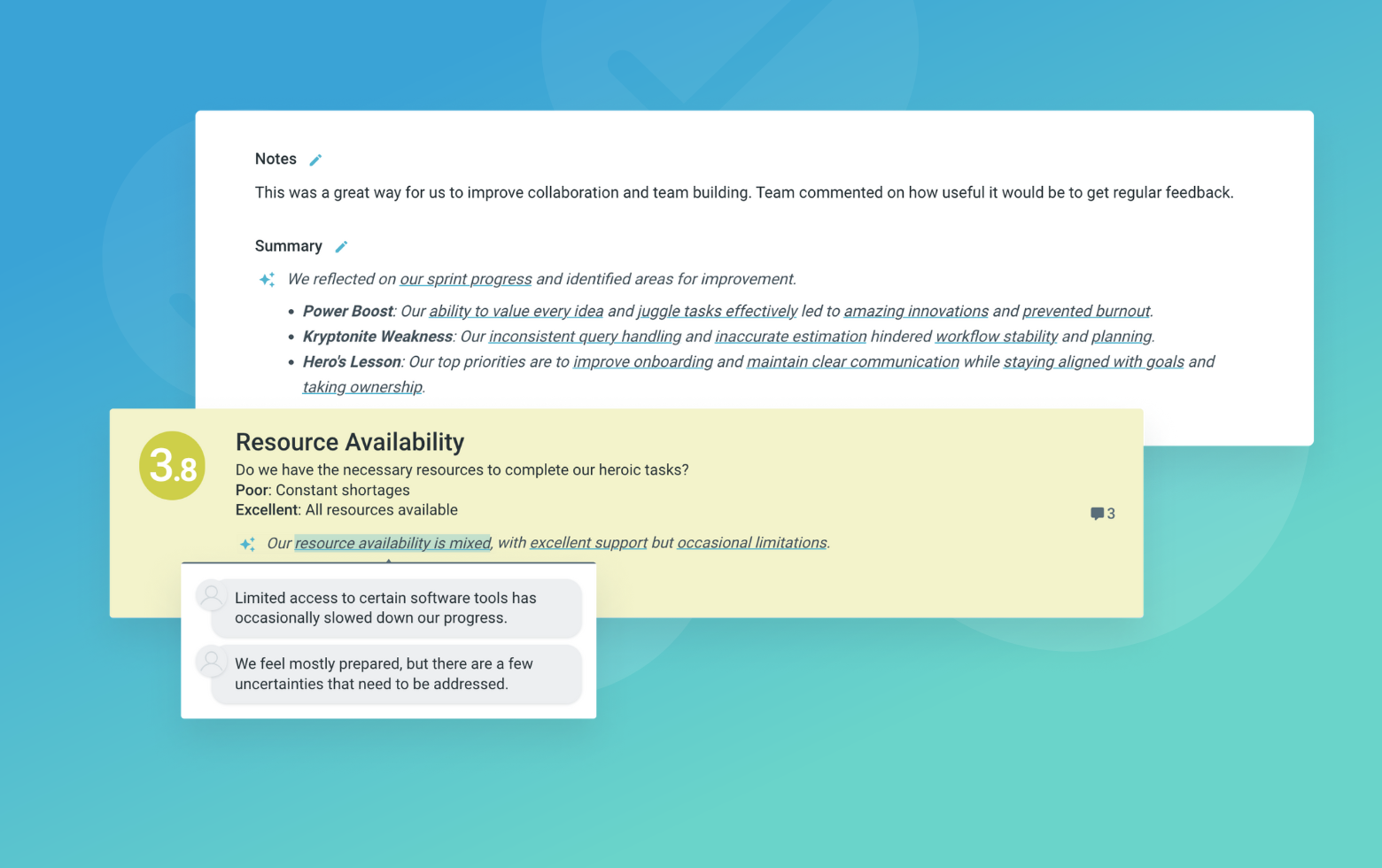The end of year retrospective is an opportunity to look back on the past 12 months and celebrate successes, analyze setbacks, and identify areas for improvement. It allows teams to gain valuable insights and set the stage for an even more productive year ahead.
This template encourages participants to share their perspectives on what went well, what didn't go as planned, and what they've learned. It fosters an open and constructive dialogue, helping teams build on their strengths and address any weaknesses or obstacles they encountered.
By taking the time to reflect collectively, teams can develop a shared understanding of their journey and use those insights to inform their goals and strategies for the upcoming year.
What is The End of Year Retrospective
Highlights and achievements
What were the team's most significant accomplishments this year?
Encourage participants to share specific examples of successful projects, milestones, or initiatives. Celebrate both team and individual achievements.
Challenges and obstacles
What were the most significant challenges or setbacks the team faced?
Encourage open and honest discussion about the difficulties encountered. Avoid blame or criticism, and focus on understanding the root causes.
Lessons learned
What valuable lessons did the team learn from the challenges faced?
Emphasize the importance of learning from setbacks and using those insights to improve. Encourage participants to share personal growth experiences.
Areas for improvement
What aspects of our work or processes could be improved in the coming year?
Encourage participants to identify specific areas where the team can enhance its performance or efficiency. Focus on actionable and realistic improvements.
Suggested icebreaker questions
- What was the most memorable moment or highlight of the past year for you?
- If you could describe the past year in three words, what would they be?
Ideas and tips for your retrospective meeting
- Encourage open and honest feedback by creating a safe and judgment-free environment.
- Use visual aids or prompts to stimulate discussion and capture key points.
- Assign a dedicated note-taker to document the insights and action items.
- Celebrate successes and achievements, but also embrace failures as learning opportunities.
- Ensure that the retrospective remains constructive and focused on improvement, not blame.
- Follow up on the identified areas for improvement by creating actionable plans.
.
How to run effective meetings with TeamRetro
Start Your Session in a Click
Log into TeamRetro and choose your template. Customise questions and the workflow to create your perfect retro for your team.
Create Your Team Easily – No Separate Accounts Needed
Brainstorm Individually – Free From Bias
Smart Grouping for Faster Insights
Fair, Flexible, and Fast Voting
Engage, React, and Capture Key Insights
Walk your team through ideas one by one with Presentation Mode. Stay in sync, spark real-time discussions, and capture feedback with comments, live reactions, and polls—all in one place.
Turn Ideas Into Action
Propose next steps with team buy-in, get AI-powered action suggestions, and keep everything in one place. Committed actions sync to your personal dashboard and integrate with your workflow tools—keeping you on track.
Save, Share, and Stay on Track
Get quick AI-powered summaries, add facilitator notes, and store retrospectives in your library for easy access. Schedule your next session and track published actions to keep your team accountable at the next retro.
Turn Team Data into Actionable Insights
Uncover trends, common themes, and key engagement metrics at a glance. Track sentiment shifts, analyze conversations, and monitor completed actions to drive continuous improvement.
